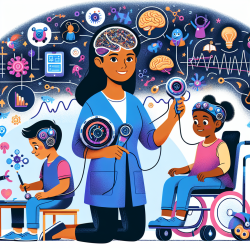The alarming rise in school mass shootings in the United States has become a critical concern for educators, policymakers, and mental health professionals. The research article "An Examination of US School Mass Shootings, 2017–2022: Findings and Implications" provides valuable insights into the trends and implications of these tragic events. By understanding these findings, practitioners can enhance their skills and contribute to creating safer educational environments.
Key Findings from Recent Research
The study highlights several important trends in school mass shootings over the past five years:
- Increased Frequency: The number of school mass shootings has risen significantly, with notable spikes in 2021.
- Demographic Disparities: Gun violence disproportionately affects boys, particularly Black boys, who experience higher gun deaths per capita than any other group.
- Connection to Schools: A significant percentage of perpetrators have a connection to the schools they target, often obtaining firearms from home or relatives.
The research underscores the urgent need for effective interventions and policies to address these issues and protect students.
Strategies for Practitioners
Curbing School Violence
The implementation of Multi-Tier Systems of Supports (MTSS), including Positive Behavioral Interventions and Supports (PBIS) and Response to Intervention (RTI), has shown promise in improving school climate and reducing violence. These approaches focus on creating positive learning environments through evidence-based interventions tailored to students' needs.
- Tier 1: Universal supports for all students to promote positive behavior.
- Tier 2: Targeted interventions for students requiring additional support.
- Tier 3: Intensive, individualized support for students with significant needs.
This framework can help reduce reliance on exclusionary measures like zero tolerance policies, which have been shown to be ineffective in preventing school violence.
Mental Health Support
The psychological impact of school shootings on students is profound. Practitioners must be equipped to address the mental health needs of students exposed to such trauma. Strategies include:
- Crisis Intervention Training: Equipping educators and mental health professionals with skills to support students during crises.
- Mental Health Resources: Providing access to counseling services and creating safe spaces for students to express their emotions.
The National Association of School Psychologists recommends open communication with students about their fears and providing developmentally appropriate explanations of events. Limiting exposure to media coverage can also help reduce anxiety among students.
The Role of Policy
The study emphasizes the importance of policy changes at both federal and state levels. Recent legislative efforts aim to enhance background checks and implement "red flag laws" to prevent individuals at risk from accessing firearms. However, further action is needed to restrict access to assault weapons and high-capacity magazines.
The research calls for framing gun violence as a national public health issue requiring comprehensive research and targeted interventions. By advocating for stronger gun laws and increased funding for mental health resources, practitioners can contribute to reducing the incidence of school mass shootings.
This study provides a crucial foundation for practitioners seeking to improve their skills and make a meaningful impact in addressing school violence. By implementing evidence-based strategies and advocating for policy changes, educators and mental health professionals can work towards creating safer schools for all students.
An Examination of US School Mass Shootings, 2017–2022: Findings and Implications










